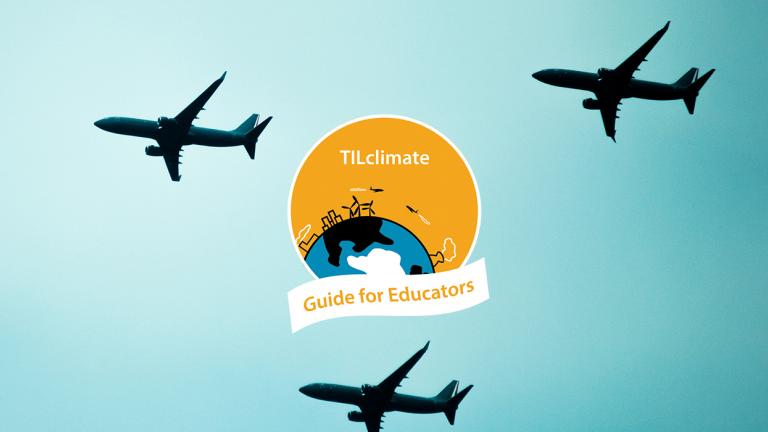
This Guide for Educators was developed by the MIT Environmental Solutions Initiative as an extension of our TILclimate (Today I Learned: Climate) podcast, to make it easier for you to teach climate change, earth science, and energy topics in the classroom. It is an extension of the TILclimate episode "TIL about planes."
Browse all TILclimate guides for educators.
Description
How much of an impact does air travel have on climate change? What can be done about it? Through a hands-on demonstration and a short literature review, students consider the impacts and future of aviation. With data, students consider why climate communicators and scientists focus on carbon dioxide.
SWBAT:
-
Understand that dark surfaces absorb more of the sun’s energy than light surfaces.
-
Explain why carbon dioxide is a focal heat-trapping gas.
-
Understand a few promising technologies for the future of aviation.
Skills:
-
Data collection & graphing
-
Interpreting science writing aimed at the general public
Standards:
-
HS-ESS2-4 Use a model to describe how variations in the flow of energy into and out of Earth’s systems result in changes in climate.
-
HS-ESS3-4 Evaluate a technological solution that reduces impacts of human activities on natural systems.
-
HS-ETS1-3 Evaluate a solution to a complex real-world problem
Disciplinary core ideas:
-
ESS2.A Earth Materials and Systems
-
ESS2.D Weather and Climate
-
ESS3.C Human Impacts on Earth Systems
-
ESS3.D Global Climate Change
What is included in this Educator Guide
- How to use TILclimate Educator Guides (Download)
- Full Educator Guide (Download)
- Includes both Teacher and Student pages
- Includes both Teacher and Student pages
- Teacher pages (Download)
- Includes materials, discussion questions, background resources, and adaptation suggestions for science, social science, and ELA teachers
- Includes materials, discussion questions, background resources, and adaptation suggestions for science, social science, and ELA teachers
- Student pages (Download)
-
Demonstration: Albedo
-
Data Investigation: Why Carbon Dioxide?
-
Read & Discuss: The Future of Air Travel
-
Listen to the episode


